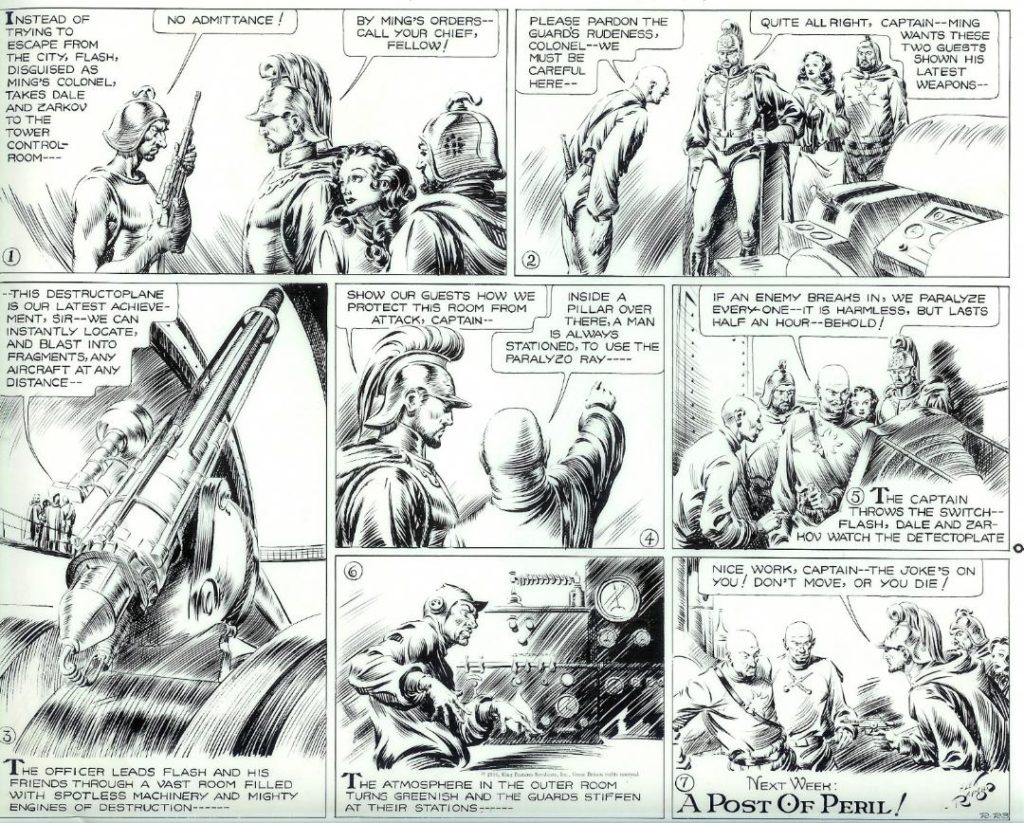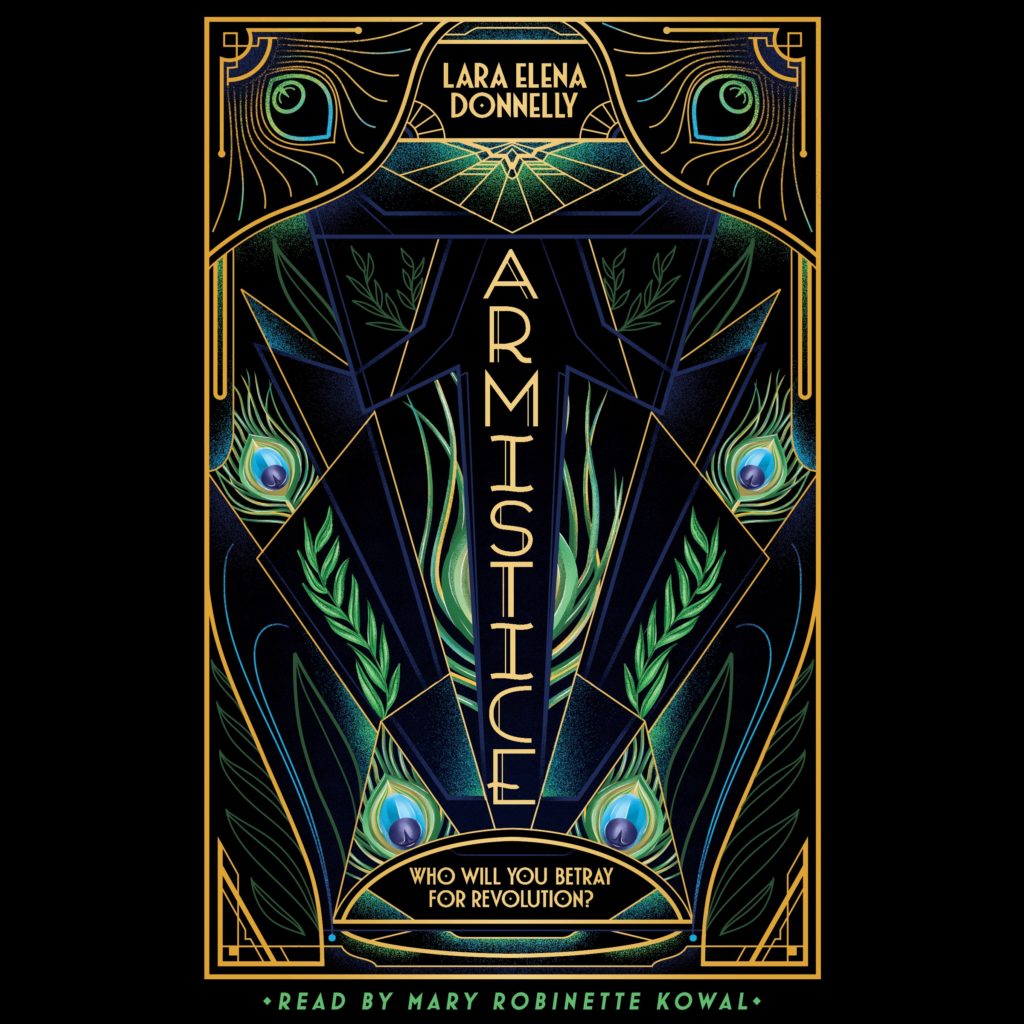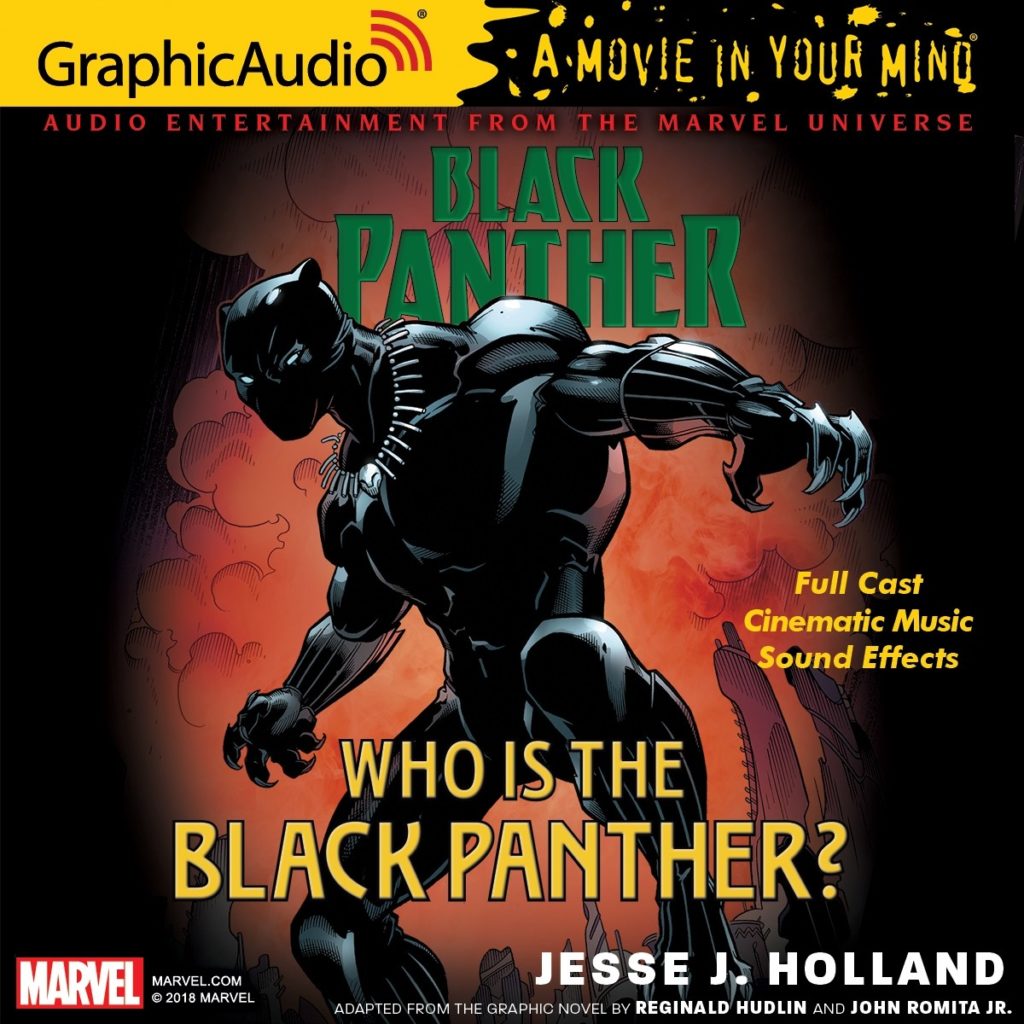(1) CHANGE MY WORDS? Ira Nayman discusses the elements of “The Professional Editor/Writer Relationship” at the SFWA Blog.
…Many writers resist the editorial process for a variety of reasons. It takes a lot of time, thought and, ultimately, work to craft effective prose fiction; it can be galling to allow a stranger to come along and tell you that it has to be changed. In addition, it can be hard to accept that what you have put so much of yourself into is not perfect exactly as you wrote it. These issues can be overcome with experience. All you need is one great editor to help you see the flaws in a story and guide you through the process of correcting them to see the value in the process….
… My practice as an editor is to couch interpretive input as either a suggestion (“You might want to try…”) or a question (“This is unclear. Might it be better as…?”). If the writer makes a reasonable argument for why the change isn’t necessary, I’m usually willing to accept it (although it is also true that 90% or more of the changes I ask for are accepted by authors). I try to keep in mind that, in matters of artistic interpretation, there aren’t always clear-cut right or wrong answers. While my input makes sense to me given my understanding of how stories work, it is always possible that the writer is in a better position to judge what works for their specific story….
(2) DEPARTMENT OF REDUNDANCY DEPARTMENT. [Item by SF Concatenation’s Jonathan Cowie.] BBC Radio 4 is ready to mourn “The Strange Death of Cultural Originality”. The above was quite interesting. Basic thesis is that before 2000 only 25% of top box office films were sequels or franchise related but after 2000 it is 50%. Worryingly, it also applies to TV and films. There is an explanation. Competition due to the growth in content delivery formats means that platform deliveries cannot afford to take chances. Conversely, it is possible to argue philosophically, that little is new and that most is a variation, re-hash, mix-n-match of old material….
These days, when you turn on the TV or visit the cinema do you ever think, hang on, I’m sure I’ve seen this before? Maybe you’ve bought the latest crime thriller after seeing it in the bestseller lists and, 50 pages in, you’re overcome with a weird feeling of deja vu? And when you put the radio on in the car, does all the music sound, well, the same?
If so, don’t worry. It’s not just you. Something strange seems to be happening.
Statistics show that the number of top 20 highest grossing Hollywood films each year which are either sequels or spin-offs has risen from 25% to 50% in the past two decades.
In the 1960s, most TV shows were original formats. Today, a third are spinoffs or multiple broadcasts.
In music, the number of artists on the Billboard Hot 100 has been falling for some time, meaning the big established acts are getting more and more exposure while new acts struggle to break through.
Existing best-selling authors are becoming increasingly dominant in publishing sales.
So is it fair to say that cultural originality is in rather poor health?
Might it even be dead?
Ben Chu spends spends a lot of time thinking about economics, numbers and why the world works in the way it does. In this programme he’s going to ask – if cultural originality is dead, who or what killed it?
(3) SOME STATES RESIST CENSORSHIP OF LIBRARIES. “Librarians gain protections in some states as book bans soar” reports the South Dakota Searchlight.
… Amid a national rise in book bans in school libraries and new laws in some red states that threaten criminal penalties against librarians, a growing number of blue states are taking the opposite approach.
New Jersey joined at least five other states — California, Illinois, Maryland, Minnesota and Washington — that have passed legislation within the past two years that aims to preserve access to reading materials that deal with racial and sexual themes, including those about the LGBTQ+ community.
Conservative groups have led the effort to ban materials to shield children from what they deem as harmful content. In the 2023-24 school year, there were 10,000 instances of book bans across the U.S. — nearly three times as many as the year before, according to a recent report by PEN America, a nonprofit that advocates for literary freedom.
The New Jersey measure not only sets minimum standards for localities when they adopt a policy on how books are curated or can be challenged but also prevents school districts from removing material based on “the origin, background, or views of the library material or those contributing to its creation.”
The law also gives librarians immunity from civil and criminal liability for “good faith actions.”
New Jersey state Sen. Andrew Zwicker, a Democrat who introduced the legislation, said until recently he thought that book bans were a disturbing trend, but one limited to other states. But early last year, he went to a brunch event and met a school librarian who told him she faced a torrent of verbal and online abuse for refusing to remove a handful of books with LGBTQ+ themes from her library’s shelves.
https://southdakotasearchlight.com/2024/12/15/state-library-budget-cut-would-hamstring-local-libraries-opponents-say/embed/#?secret=AmvBI5LLAe#?secret=3GwRz4n2Kt “That’s when I realized that I was so horribly mistaken, that these attacks on librarians and on the freedom to read were happening everywhere,” Zwicker told Stateline. “I went up to her and asked, ‘What can I do?’”…
… Legislation differs by state, including in enforcement and how to penalize noncompliant localities.
In Illinois, for example, school districts risk losing thousands of dollars in state grant funding if they violate the state’s new law discouraging book bans. But as the Chicago Tribune reported last month, that financial penalty was not enough to persuade many school districts throughout the state to comply, with administrators saying they are concerned about giving up local control on school decisions.
Several school districts in other states have similarly rebelled.
North of Minneapolis, St. Francis Area Schools’ board last month decided it would consult with conservative group BookLooks to determine which books it will buy for its school libraries. BookLooks uses a 0-through-5 rating system that flags books for violent and sexual content.
Under its rating system, books that have long had a place in school libraries — such as the Holocaust memoir “Night” by Elie Wiesel or “I Know Why the Caged Bird Sings” by Maya Angelou — would require parental consent to read….
(4) CALLING LA COUNTY HIGH SCHOOL STUDENTS. The Light Bringer Project is putting together the first-ever student edition of their literary journal, Locavore Lit. Los Angeles County high school students looking to publish their original fiction are invited to submit original fiction in any genre, between 500 and 5,000 words, through February 21.
Show us your fantastical worlds, your daring adventures, your tragic endings, and your strangely compelling characters.
We will be publishing between five and seven stories, and each chosen author will be paired with a professional illustrator who will work to highlight the story’s themes and imagery.

(5) DRONES FOR THE PROFESSIONAL ARMY. [Item by Francis Hamit.] A glimpse of the future courtesy of the US Army. I follow this stuff the way other people follow sports. “Imagining a US Army Drone Corps” at the Modern War Institute.
In February 2024, Ukrainian President Volodymyr Zelenskyy announced the creation of the Unmanned Systems Forces. It is no secret that the Ukrainian military has used drones to great effect. Its units continue to innovate with drone tactics, techniques, and procedures and effects in the air, land, and maritime domains. Both belligerents in the Russia-Ukraine War have pledged to build over a million aerial drones each year to fill the skies. Even with the extremely innovative use of the drones (mine laying, incendiary delivery) already observed in Ukraine, history will show that the most important attribute of drones has been their ability to serve as economy-of-force systems. In a grinding war of attrition, drones have allowed the Ukrainian military to protect its limited combat power and threaten a much larger combat force across multiple domains.
The Unmanned Systems Forces that Zelenskyy announced amount, effectively, to a drone corps. US policymakers have taken note of the effectiveness of drones in the conflict and a drone corps may also be coming to the US Army….
… As an Army we are at a critical inflection point and have an opportunity to build a lethal enabling force. A more expansive course of action would involve creating drone units that can operate independently or augment brigade formations to fully leverage the situational awareness and strike capability of the systems. In a zero-growth environment with no major budgetary reallocations, the ready solution is the consolidation of the human-machine integration platoons across a division to build a robotics recon strike squadron (R2S2).,,,
(6) PETER YARROW (1938-2024). “Puff the Magic Dragon” composer Peter Yarrow, part of the group Peter, Paul and Mary, died January 7. The New York Times tribute says in part:
Peter Yarrow, whose caring and righteous vocals for the trio Peter, Paul and Mary helped establish them as one of the most popular folk acts of the 1960s, died on Tuesday at his home on the Upper West Side of Manhattan. He was 86.
His death was confirmed by Ken Sunshine, his publicist. Mr. Sunshine said the cause was bladder cancer, which Mr. Yarrow had been battling for the past four years.
On many of the trio’s recordings they split the vocal parts equally, braiding Mr. Yarrow’s precise tenor around Noel Paul Stookey’s gentle baritone and Mary Travers’s warm contralto. But Mr. Yarrow also had some prominent lead vocals as well, fronting such well-known group recordings as “Puff the Magic Dragon,” “Day Is Done” and “The Great Mandala,” all of which he either wrote or co-wrote. “Puff” became a No. 2 Billboard hit, while “Day Is Done” grazed the Top 20….
(7) TODAY’S BIRTHDAY.
[Written by Cat Eldridge.]
January 7, 1912 — Charles Addams. (Died 1988.)

Ahhh, Charles Addams. No doubt you’re now thinking of the Addams Family and you’ve certainly reason to do so, but let’s first note some other artistic endeavors of his.
His first published book work in the early Forties was the cover for But Who Wakes The Bugler by Peter DeVries, a silly slice of life novel. He previously sold some sketches to the New Yorker.
Random House soon thereafter contracted him for anthologies of drawings, Drawn and Quartered and Addams and Evil. (Lest you ask, the term “anthology” is from his website.) Four more anthologies, now on Simon & Schuster will follow.

And there was The Chas Addams Mother Goose, really there was. Here’s his cover for it.
Based on his characters that had appeared in his New Yorker cartoons, 1964 saw The Addams Family television series premiere on ABC. It would star, and I’m just singling them out, John Astin as Gomez and Carolyn Jones as Morticia.
It lasted just two seasons of thirty-minute episodes. Mind you there were sixty-four episodes. Yes, I loved every minute of it. I have watched it at least three times, as recently as several years ago and it as great now as was when I first watched it decades ago.
Halloween with the New Addams Family is a follow-up film with the primary cast back. No idea why the New is in there. We also had The Addams Family, an animated with a voice cast with some of the original performers, yet another Addams Family series (each of these largely had just John Astin from the original series).
Think we’re done? Of course, there is The Addams Family with Raúl Julia as a most macabre Gomez and Anjelica Huston as Morticia Addams with Carol Struycken playing Lurch for the first of several times. I really, really adore this film.
It was followed by the Addams Family Values which for some reason that I can’t quite figure out I just don’t adore.
Are we finished? No. The New Addams Family which aired for one nearly a quarter of a century after the original series went off the air after but a single season but lasted an extraordinary sixty-five episodes. I need to see at least the pilot for this.
And then there’s the Addams Family Reunion which had the distinction of Tim Curry as Gomez. I’ve not seen it, so who has? It sounds like an intriguing role for him…
There will be two animated films as well, The Addams Family and The Addams Family 2, neither of which I’ve seen.
Finally let’s talk about licensing. After his death, his wife, Tee Addams, was responsible for getting his works licensed. To quote the website, “The Addams Family, both its individual characters and the Family in its entirety, have a long history of selling products, in print ad campaigns and television commercials alike – from typewriters to Japanese scotch, from designer showcases to perfume, from paper towels to chocolate candies, and all that lies in between.”
So I went looking for use of the characters. I think the best one I found is the claymation one for M&Ms Dark Chocolate. (And please don’t ask me about the Wizard of Oz M&Ms commercial. That one is still giving me nightmares. Though the FedEx Wizard of Oz commercial is just silly. I mean dropping a FedEx truck on that witch…)
(8) MEMORY LANE.
[Written by Cat Eldridge.]
January 7, 1929: Three comic strips debuted
I’ve no idea why three newspaper comic strips were first published on this date. Before you think that can’t be possible, I’ve double-checked and yes, they were. I think it has to do with traditional Christmas holidays at that time in American history, so they’d be launched after those holidays.
January 7, 1929 — The Buck Rogers in the 25th Century A.D. comic strip premiered. Philip Francis Nowlan Was the writer for the first decade with Dick Calkins and Russell Keaton being the artists for the first three years. At its peak in 1934, Buck Rogers appeared in 287 U.S. newspapers. Like many other popular comic strips of that day, Buck Rogers was reprinted in Big Little Books in a reformatted form.

January 7, 1929 — The Tarzan of the Apes strip was first published. It was drawn by Hal Foster (the first decade of strips) and Rex Mason (nearly twenty years’ worth) with Don Kraar adapting Edgar Rice Burroughs story. A full-page Sunday strip began on March 15, 1931, with artwork by Rex Maxon. A dozen artists would draw the strip including Gil Kane and Mike Grell in its waning years. Russ Manning’s portrayal of Tarzan Is considered by many to be the definitive one. We’ve included two strips here, one with him as artist, the first with Hal Foster.


January 7, 1934 — First published on this date, the Flash Gordon comic strip was inspired by the success of, and created rather obviously to compete with, the already established Buck Rogers strip. The story goes that King Features tried to purchase the rights to John Carter of Mars from Burroughs who refused, so King Features then turned to Alex Raymond, one of their staff artists, to create a similar story. The rest is history. Raymond’s strip would run until 1943 with the various artists and strips continuing for decades.

(9) COMICS SECTION.
- Carpe Diem has a mirror with a gripe.
- Loose Parts applies cartoon logic to civil engineering.
- Rhymes with Orange shows a famous inventor was more ambitious than we knew.
- xkcd charts the “features of adulthood”.
(10) JESSE HOLLAND Q&A. At WBUR, “Here and Now” host Celeste Headlee speaks with journalist Jesse Holland, author of the forthcoming Marvel/Titan Books anthology Captain America: The Shield of Sam Wilson, about the state of the Black superhero universe: “Taking stock of the Black superhero universe”. There’s also an excerpt from the book at the link.

(11) WEREWOLF? THERE PUB. [Item by Steven French.] Of marginal genre interest perhaps, but the Tan Hill Inn in North Yorkshire, where that famous pub scene in An American Werewolf in London was filmed, regularly gets snowed in during the winter. Here’s the Guardian’s amusing account of the latest ‘lock in’, including this reference to the classic movie: “Popcorn, pints and a pooch’s birthday: life snowed in at the Tan Hill Inn” from the Guardian.
7pm
Headlights are approaching! There’s a knock on the door. In step Chelsey Frankland and Luke Batty, who have somehow managed to get here in a 4×4 from Doncaster. Silence falls as we stare at them, gobsmacked, reminiscent of that scene in the 1981 film An American Werewolf in London. In fact, it’s identical to that scene because we are in the exact room where it was filmed.
(12) SET IN THE PRESENT? Slashfilm invites you to discover “Eight Classic (And Not-So-Classic) Sci-Fi Movies Set In 2025”.
We are all interested in the future, for that is where you and I are going to spend the rest of our lives. Welcome to 2025. It’s the future….
…Now we’re actually here in 2025, though, and we can see that few of those old writings came to pass. Indeed, from our standpoint, the future is looking positively bleak. There is a lot of authoritarianism to look forward to, and the curtailing of human rights seems to be on the docket worldwide. As such, we would do well to look back at the sci-fi of the past, perhaps merely as a sociological exercise. What did the writers of previous decades think 2025 would look like? Would we be fighting future Nazis, falling in love with computers, or piloting 100-foot Rock-Em-Sock-Em Robots?
One of the films they picked only looked three years into the future – and it’s a future peculiar to The Asylum.
2025 Armageddon (2022)
Schlock-lovers everywhere are likely intimately familiar with The Asylum, a low-budget film studio best known for their mockbusters (that is; clear and open imitations of contemporary blockbuster movies). Just as there was a “Pacific Rim,” The Asylum churned out the zero-budget knockoff “Atlantic Rim.” They did their own “Aladdin.” Their sales model seems to be based on tricking consumers into renting their movies, confusing them for the genuine article.
At least “2025 Armageddon” acknowledged that model, as one of the film’s opening plot points was two twin sisters (Jhey Castles and Lindsey Marie Wilson) bonding over the Asylum movie “Snakes on a Train,” which their grandmother rented for them, thinking it was “Snakes on a Plane.”
The purpose of “2025 Armageddon” was to gather the many absurd monsters from multiple other Asylum films, and assemble them in a single gigantic crossover event akin to “Destroy All Monsters.” The film features the Mega Piranha from “Mega Piranha,” the Mega Shark from “Mega Shark,” robot monsters from both “Atlantic Rim” and “Transmorphers,” and the croc monster from “Mega Shark Versus Crocosaurus.” There’s even a Sharknado for good measure. These creatures are all manifesting in the real world after a species of aliens watched a bunch of Asylum movies, and mistook them for reality. They used their high-tech monster-making machines to populate the Earth with Asylum monsters, as God intended.
Michael Paré appears, of course, because it was either him or Eric Roberts.
(13) GOOD NEWS, BAD NEWS. “Mathematician Reveals Strange New Enigmas for Time Travelers” – Discover Magazine says it’s time you knew.
First, the good news for time travelers. Physicists have long recognized that nothing in the laws of physics specifically forbids time travel. As far as they can tell, these laws don’t care whether time is running forwards or backwards; they work just as well either way….
…Now the bad news, which comes from Lorenzo Gavassino, a mathematician at Vanderbilt University in Nashville. Gavassino has discovered some previously unknown side effects of time travel.
He says the laws of physics may not forbid it but if it is possible, these laws lead to some outlandish consequences, one of which is that any human who made the journey would not be able to remember it. The laws of physics suggest this person’s memory would be wiped clean as soon as they returned to the present….
(14) GALACTIC SQUINTING. “How astronomers used gravitational lensing to discover 44 new stars in distant galaxy” at ABC News.
NASA’s James Webb Space Telescope, history’s largest and most complex space observatory that serves thousands of astronomers around the world, has captured a unique image that revealed 44 individual stars in a galaxy 6.5 billion light-years away from the Milky Way, according to a paper published Monday in Nature Astronomy.
Astronomers used Webb’s high-resolution optics and distortion in space to reveal the existence of dozens of previously unknown stars, the researchers said. The detection of a “treasure trove” of stars was only possible because the light from the 44 new stars was magnified by a large cluster of galaxies, called Abell 370, in front of it, according to the Center for Astrophysics.
The technique is known as gravitational lensing, which is when a massive amount of matter — like a cluster of galaxies — creates a gravitational field that distorts and magnifies the light from distant galaxies that are behind it but in the same line of sight, according to NASA. The effect is essentially like looking through a giant magnifying glass….
(15) VIDEO OF THE DAY. Exits Examined delves into “The Bizarre History of Dragonriders of Pern”.
What do you get when epic fantasy crashes violently into science fiction? The Dragonriders of Pern baby! This legendary series is packed with telepathic dragons, daring riders, and a world that’s as dangerous as it is fascinating. Set on the planet Pern, where humanity’s survival hinges on their bond with dragons to fight a deadly menace from the skies, these books are a wild mix of adventure, survival, and discovery. In this video, we’re diving into the history of Dragonriders of Pern, exploring its incredible worldbuilding, unforgettable characters, and why it’s still matters.
[Thanks to Chris Barkley, Cat Eldridge, SF Concatenation’s Jonathan Cowie, Andrew (not Werdna), Francis Hamit, Steven French, Kathy Sullivan, Teddy Harvia, Mike Kennedy, Andrew Porter, and John King Tarpinian for some of these stories. Title credit belongs to File 770 contributing editor of the day Daniel Dern.]







